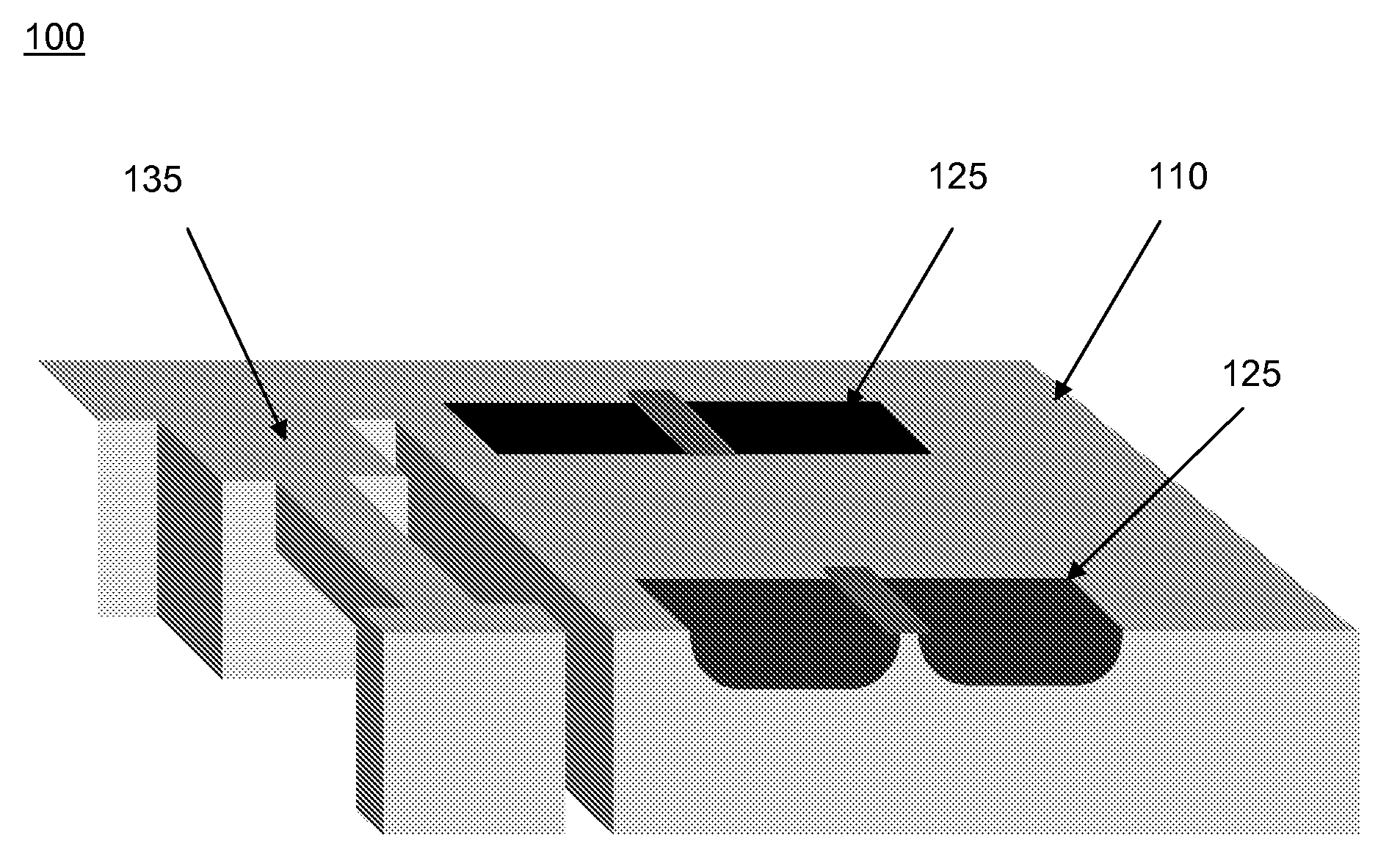Cmos-compatible bulk-micromachining process for single-crystal mems/nems devices
a micro-machining process and single-crystal technology, applied in the direction of microstructural system, semiconductor device, forming microstructure, etc., can solve the problem of requiring a larger dead-space around the device, requiring less accurate double-side polished wafers, and higher risk of stiction of the device during processing and operation
- Summary
- Abstract
- Description
- Claims
- Application Information
AI Technical Summary
Benefits of technology
Problems solved by technology
Method used
Image
Examples
Embodiment Construction
[0031]In one embodiment, begin with (1) a CMOS wafer with circuitry already fabricated. (2) Etch trenches to define MEMS structure using an anisotropic etch. During the etch, a protective layer is deposited simultaneously and remains only on the sidewalls of the etched cavity. In one embodiment, the etch could use sulfur hexafluoride (SF6) to etch the silicon and oxygen (O2) to form the protective layer on the sidewalls. In another embodiment, the protective layer is formed from a combination of O2, SiF4, and SF6. In another embodiment, the protective layer is SiO2 formed from an O2 plasma (plasma-enhanced oxidation). (3) The etch is either timed or stops on a middle layer (e.g. SOI) whose etch characteristics are different from that of the materials above and below. The middle layer can be formed, for example, by either pre-CMOS (e.g. bonded SOI, Separation by Implantation of Oxygen (SIMOX), etc.) or post-CMOS (SIMOX, ion implantation). (4) The middle layer is removed from the bott...
PUM
| Property | Measurement | Unit |
|---|---|---|
| temperature | aaaaa | aaaaa |
| shape | aaaaa | aaaaa |
| structure | aaaaa | aaaaa |
Abstract
Description
Claims
Application Information
 Login to View More
Login to View More - R&D
- Intellectual Property
- Life Sciences
- Materials
- Tech Scout
- Unparalleled Data Quality
- Higher Quality Content
- 60% Fewer Hallucinations
Browse by: Latest US Patents, China's latest patents, Technical Efficacy Thesaurus, Application Domain, Technology Topic, Popular Technical Reports.
© 2025 PatSnap. All rights reserved.Legal|Privacy policy|Modern Slavery Act Transparency Statement|Sitemap|About US| Contact US: help@patsnap.com



